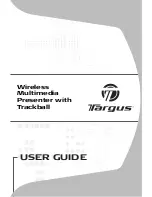
Pike Technical Manual
V5.2.0
192
Description of the data path
Hue and saturation
Pike CCD color models are equipped with
hue
and
saturation
registers.
The
hue register
at offset 810h allows the color of objects to be changed without
altering the white balance, by +/- 40 steps (+/- 10°) from the nominal percep-
tion. Use this setting to manipulate the color appearance after having carried
out the white balance.
The
saturation register
at offset 814h allows the intensity of the colors to be
changed between 0 and 200% in steps of 1/256.
This means a setting of zero changes the image to black and white and a setting
of 511 doubles the color intensity compared to the nominal one at 256.
Color correction
Why color correction?
The spectral response of a CCD is different of those of an output device or the
human eye. This is the reason for the fact that perfect color reproduction is not
possible. In each Pike camera there is a factory setting for the color correction
coefficients, see Chapter
Color correction is needed to eliminate the overlap in the color channels. This
overlap is caused by the fact that:
•
Blue light:
is seen by the red and green pixels on the CCD
•
Red light:
is seen by the blue and green pixels on the CCD
•
Green light:
is seen by the red and blue pixels on the CCD
The color correction matrix subtracts out this overlap.
Color correction in Allied Vision cameras
In Allied Vision cameras the color correction is realized as an additional step in
the process from the sensor data to color output.
Note
Configuration
To configure this feature in feature control register: See
Note
Hue and saturation
do not show any effect on Pike color mod-
els in the Raw8 and Raw16 format, because color processing is
switched off in all Raw formats.
















































